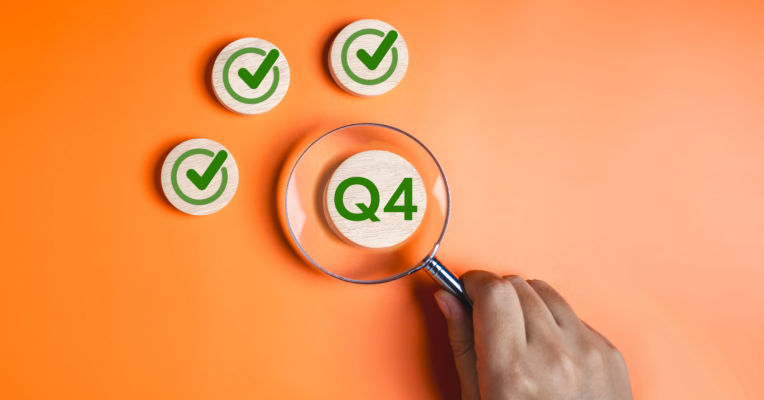CDs vs. Treasuries: Which Makes Sense – When and Why?
There are many misleading narratives about the best place to leverage returns on short-term investments. There‘s no shortage of advice. But most of it — from your opining cousin on Facebook to your over-sharing colleague on LinkedIn — doesn‘t exactly come with a fiduciary duty to you. There is a lot of volume around the conversation about CDs vs. Treasuries, but you need a clear voice to rise above the din and offer some clarity.
First, let‘s level set.
What are Certificates of Deposit (CDs)?
CDs are a type of financial instrument offered by banks and credit unions. They are considered relatively safe investments compared to other options, but whether they will pay you more interest than cash depends on several factors.
What are the pros of CDs?
- Safety: CDs are often considered safe because they are typically insured up to certain limits by the Federal Deposit Insurance Corporation (FDIC) in the United States. This means that even if the bank goes bankrupt, your principal investment is protected up to the insured limit.
- Fixed Interest Rate: When you invest in a CD, you agree to lock in your money for a specific period, often ranging from a few months to several years. In return, you receive a fixed interest rate usually higher than what you would get from a regular savings account.
- Predictable Returns: Since the interest rate is fixed, you know exactly how much interest you’ll earn over the CD’s term, providing a predictable return on your investment.
What are the cons of CDs?
- Limited Liquidity: One major drawback of CDs is that your money is tied up for the duration of the CD’s term. If you need access to your funds before the CD matures, you might face penalties or forfeit a portion of the interest earned.
- Lower Returns Compared to Riskier Investments: While CDs offer a safer option than more volatile investments like stocks, the trade-off is that the returns are generally lower. If you’re looking for higher returns, you might need to consider other investment options, which inherently come with more risk.
- Inflation Risk: If the interest rate on your CD doesn’t keep up with inflation, your purchasing power might erode over time. This can be a concern if inflation outpaces the interest you’re earning.
- Opportunity Cost: Investing in a CD means tying up your money for a specific period. If better investment opportunities arise during that time, you could miss out on potentially higher returns elsewhere.
What are Treasury bills (T-bills)?
T-bills are short-term government securities issued by the US Department of the Treasury. They are considered one of the safest investments available due to their backing by the US government.
What are the pros of T-bills?
- Safety: T-bills are considered virtually risk-free since the US government backs them. This makes them a very secure investment option.
- Liquidity: T-bills are highly liquid. They can be easily bought and sold in the secondary market before they mature, allowing investors to access their funds quickly.
- Predictable Returns: T-bills have a fixed interest rate determined at auction, which ensures a known return on investment if held until maturity.
- Diversification: T-bills can serve as a way to diversify your investment portfolio. They can act as a stabilizing component, especially during market volatility.
What are the cons of T-bills?
- Low Returns: The safety of T-bills comes at a cost. Their returns are generally lower than other investments like stocks or corporate bonds. This means that T-bills might not provide substantial growth potential for your investments.
- Interest Rate Risk: T-bill prices can fluctuate in the secondary market due to changes in interest rates. If you need to sell before maturity, you might face capital losses if rates have increased.
- Inflation Risk: Like all fixed-income investments, T-bills are susceptible to inflation risk. If inflation rises significantly, the purchasing power of the interest and principal you receive may decrease.
What you see may not be what you get
In previous quarterly updates, we’ve highlighted that “over the past year that US Treasuries offer slightly higher yields than CDs for terms of one year or less…longer-term CDs appear to offer materially higher yields than Treasuries with the same maturity.”
“Appear” is the crucial qualifier.
Let’s start with the assumption that with a CD, you are locking in a “rate” for the term. That’s a firm “maybe.” For many CD holders, there is no such thing as a “lock.” Instead, returns can change based on the implementation of a call feature.
What is a call feature?
A call feature allows an issuing bank to redeem a CD before its stated maturity, typically as early as six months from the origination date. The call feature is a win-win for the issuing bank (at the expense of the CD buyer). If interest rates decline, the issuing bank will exercise its option to redeem outstanding CDs early. If interest rates rise, the issuing bank will have locked-in access to cheaper capital for an extended period.
Inevitably, a call feature undermines a simplistic assessment of CDs vs. T-bills based on which offers the highest yields. Callable CDs offer 0.5-1% higher yields than non-callable CDs but come with more risk.
How do you identify which CDs are callable and non-callable?
Depending on your risk tolerance or appetite for change, you may want to steer clear of callable CDs. If you’re going only to consider non-callable CDs, do the following:
- Review the CD’s documentation: When considering a CD, carefully read the terms and conditions or disclosure documents provided by the issuer. Look for specific language that indicates whether the CD is callable or non-callable. The document may use terms like “callable,” “redeemable,” or “early withdrawal option” to denote a callable CD. If there is no mention of callability, it is likely a non-callable CD.
- Contact the financial institution: If you’re unsure about the callable status of a CD or can’t find the information in the documentation, you can contact the issuing bank or financial institution directly. Their customer service representatives should be able to provide you with the necessary details regarding whether the CD is callable or non-callable.
- Consult a financial advisor: If you still have questions or concerns, consulting a financial advisor can provide further clarification. They can guide you through the CD’s terms and conditions, help you understand the callable feature, and advise on whether a callable or non-callable CD aligns better with your investment goals and risk tolerance.
Why we advise Treasuries over both callable and non-callable CDs for our clients
In every case where we’ve compared purchasing Treasuries vs. CDs, Treasuries have been the better option. An investor would be better off rolling over 6-month Treasuries yielding ~5.4% than buying a 5-year CD yielding 5.4% that becomes callable starting in 6 months. Buying the 6-month Treasury would allow the investor to reinvest at a higher interest rate upon maturity if interest rates rise. If interest rates decline, both the buyer of the 6-month Treasury and the buyer of a callable CD face the same reinvestment risk.
Given Treasury securities are far more liquid than CDs (important if you ever need to sell before maturity), we can purchase an unlimited amount of a single Treasury Bills (versus needing to purchase multiple CDs to stay under FDIC limits) and income derived from Treasury securities is not taxable at the state level, we favor Treasuries over CDs where the two offerings are otherwise comparable.






